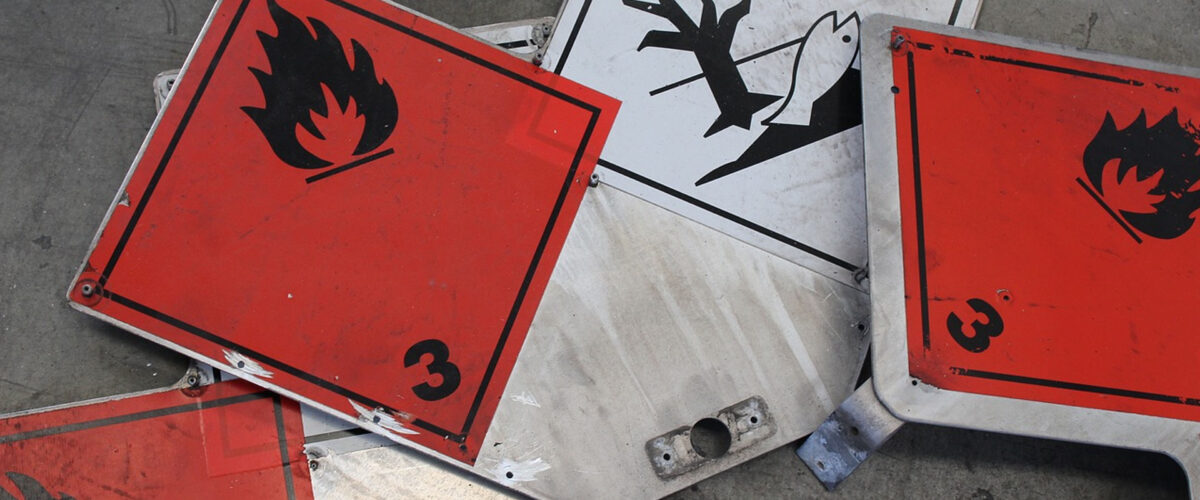Hazardous materials can include explosives, flammable and combustible substances, poisons, and radioactive materials. Emergencies can happen during production, storage, transportation, use, or disposal. You are at risk when chemicals are used unsafely or released in harmful amounts where you live, work, or play.
Tips to follow during a hazardous materials incident:
- If you are asked to evacuate
- Do so immediately
- Stay tuned to media for information on evacuation routes, temporary shelters, and procedures.
- Take pre-assembled disaster supplies.
- If you are outside
- Stay upstream, uphill, and upwind. In general, try to get at least a half-mile away from the dangerous area.
- Do not walk into or touch any spilled liquids, airborne mists, or condensed solid chemical deposits. Try not to inhale gases, fumes, or smoke. If possible, cover your mouth with a cloth or mask while leaving the area.
- If you are in a car
- Stop and seek shelter in a permanent building.
- If you must remain in the car, keep windows and vents closed and shut off the air conditioner and heater.
- If you are asked to stay indoors
- Close exterior doors and windows. Close vents, fireplace dampers, and as many interior doors as possible.
- Turn off air conditioners and ventilation systems or set ventilation systems to 10o percent recirculation so that no outside air is drawn into the building.
- Bring pets inside
- Avoid eating or drinking any food or water that may be contaminated.
Tips to follow after a hazardous materials incident:
- Listen to the media for the latest emergency information.
- Act quickly if you have come in contact with or have been exposed to hazardous chemicals.
- Seek medical treatment for symptoms as soon as possible.
- If you were evacuated, return home only when authorities say it is safe. Open windows and vents and turn on fans to provide ventilation.
- Find out from local authorities how to clean your property.
